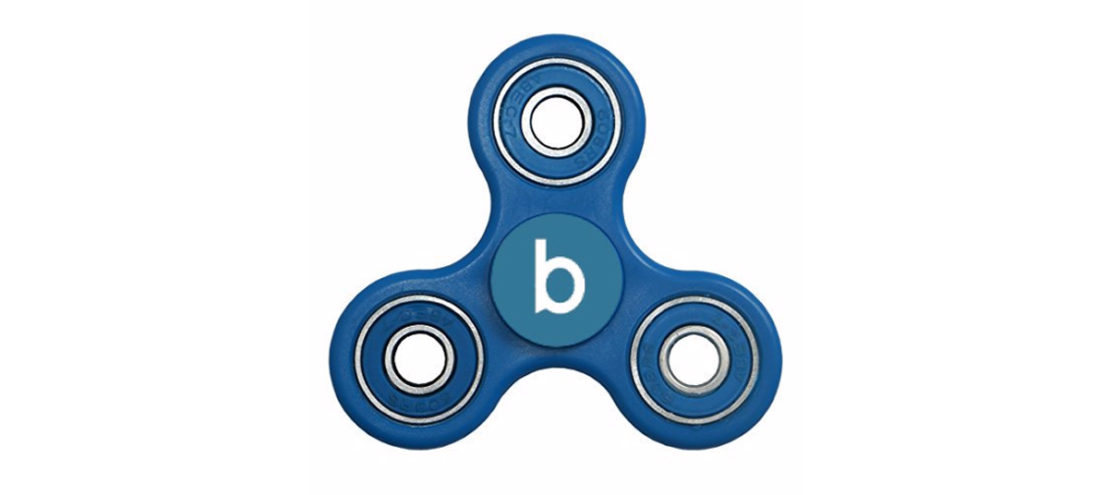Since breaking into the American consciousness just months ago, fidget spinners have quickly become a $500-million industry. You can’t miss them. Kids have spinners that glow in the dark, and many children are buying more than one. Adults seem to carry them around too, even in our PR office. But will the fad last through the summer? Will it have an impact on our everyday lives?
Backing up for a moment, in case you’ve missed this craze, a fidget spinner is a handheld device made of plastic and metal that lets people fidget without being too conspicuous. A typical one spins — much like a ceiling fan — in the palm of your hand or on any flat surface. Some light up as they spin. Some make clicking noises. Many do all three at once.
As of May 2017, the spinner had risen to a top-10 selling toy on Amazon. But to see the beginning of the craze, you don’t need to look back any further than August 2016, when Antsy Labs created a Kickstarter campaign with a modest goal of $15K for the fidget cube. You can track their funding progress, and as of last October they shattered their initial goal and raised $6.4m dollars. It’s ranked the ninth most-funded project on Kickstarter and the seventh most-backed project to date.
The spinner is a bit more fun than the cube, and it changes the ‘ball game’ from stress reliever to fun toy – it can be used to perform tricks that have made ordinary people YouTube celebrities. There are insane videos out there showing people setting them on fire and using high pressure air hoses to get them to spin at outrageous RPMs
The fidget spinner craze had been running amok in elementary and middle schools, to the point that some schools want to ban them because they’re considered a distraction. But it’s not so simple.
One reason for their popularity is that these spinners help some people relax; a minor distraction can actually improve focus. The original fidget spinner can be traced to a woman named Catherine Hettinger, who came up with the concept in 1993 for her daughter, who suffered with ADD. The spinner seems to help my own 10-year-old daughter, who has ADD and OCD — though she needs a doctor’s note to use it in school.
But it’s not just anecdotal evidence from my daughter — there might be a little science behind the demand.
A Fast Company article from 2015 stated: “We do know fidgeting is a common coping mechanism for people with ADD. A 2005 study showed kids could learn faster. Research shows a correlation between working with our hands and increased memory and creativity.” Essentially, fidget devices can help anyone through the less exciting aspects of daily work. As explained in the article: “If something we’re engaged in is not interesting enough to sustain our focus the additional sensory motor input that is mildly stimulating allows our brains to become fully engaged and allows us to sustain on the primary activity under which one is participating.”
In other words (if you were paying attention) a spinner might help you focus or stay alert. Some hipsters like myself even have a few varieties in the office. There is something of a comforting feeling to it. I admire its simple design and smooth operation.
If you’re a client of ours at Beckerman (or Antenna) don’t worry, I’m perfectly focused, and you won’t find this billed to you in our hourly charts or on your monthly activity PR plan with us. However, some of us do channel our inner fidgeting needs – free of charge – to get us through a stressful life and do our work even more productively!
Maybe we (and you) should market these as giveaways while the trend is hot!

